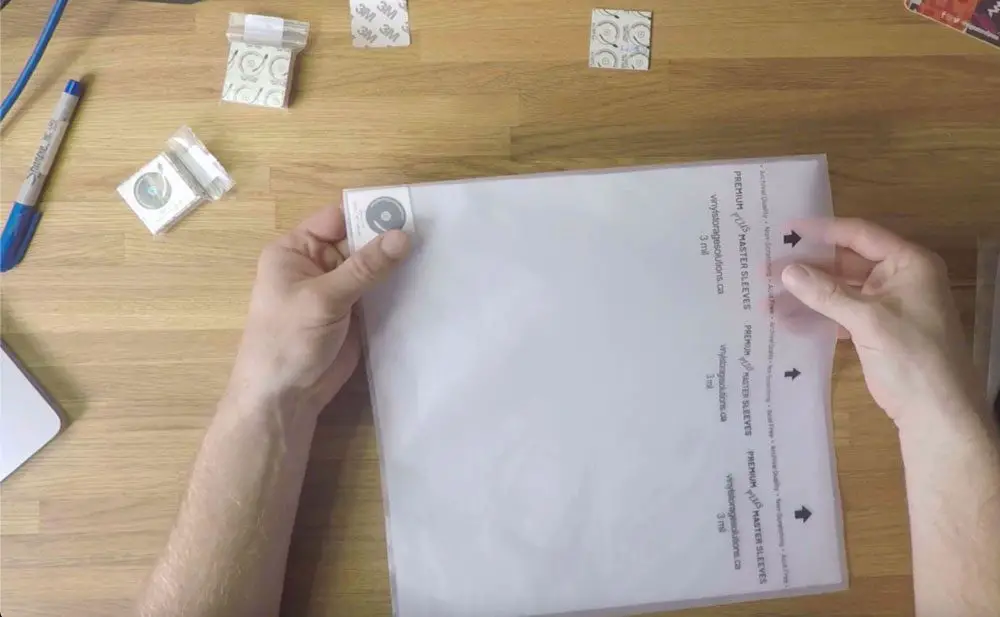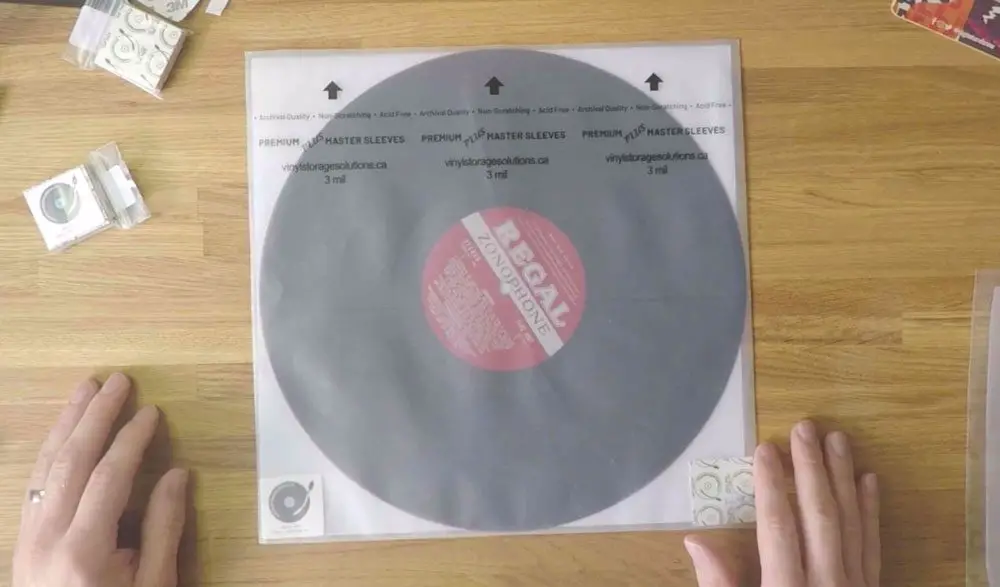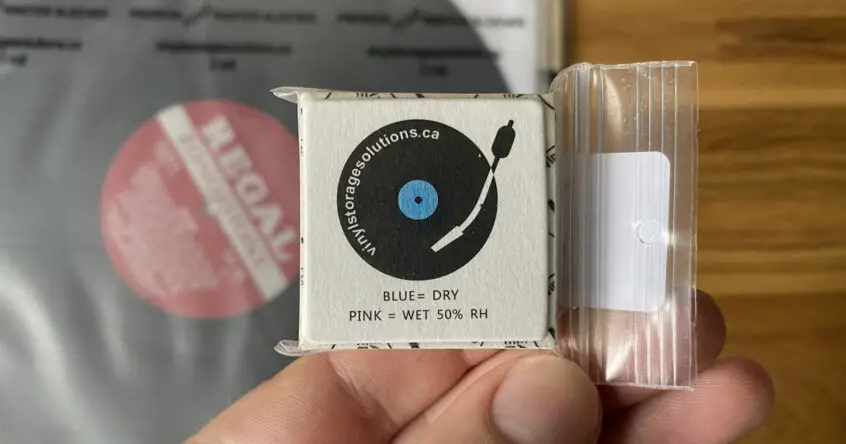When considering how to store our vinyl records for the long term, it’s essential to consider the humidity of your environment and the subsequent exposure to moisture.
If the humidity of our storage location starts to exceed around 55% or higher, we run the risk of mold growing on the record sleeve (or worse, on the vinyl itself).
If practical, and you live in a particularly humid area, you might want to consider running a dehumidifier to control your storage environment. If you’re unsure what your humidity is like, consider purchasing a hydrometer. Approximately 35-40% relative humidity is a good stable environment for storing vinyl records.
Protecting The Most Valuable Records in Our Collection
For our prized collectible pieces (those rare records and first pressings), it’s advisable to take extra care. After all, many records are irreplaceable or simply cost us a lot of time and/or money to acquire.
So what can we do to ensure our most treasured pieces don’t fall foul of the dreaded damage from mold or mildew as a result of over-exposure to moisture?
Our good friends at Vinyl Storage Solutions (VSS) have a neat solution. Their new HIC (humidity indicator cards) and desiccant cards provide a discreet way to monitor and mitigate the risk of moisture.
How Do They Work?
Each pack comes with 1 HIC card and 10 desiccant cards designed to be ultra-thin and fit perfectly into the corners of your inner record sleeves without touching the record.
Your desiccant cards are made from sustainable plant fibre, which makes them 100% bio-degradable. Even better, it can absorb 100% of its weight in moisture and has a much higher absorption rate than silica gel. In a relatively high-humid environment, each card should provide up to six months of protection. However, to be on the safe side, the HIC card will turn pink in the center if you hit 50% humidity. If this happens, it’s best to clean the record and replace the desiccant card to continue protecting the record.
Step-by-step. Installation is simple:
Step One: Write today’s date on your desiccant card so you have a record of the installation date.
Step Two: Peel back the adhesive strip and tuck the card into the bottom right or left of your inner sleeve. In this case, we’re using VSS 3mil rice paper sleeves.
Step Three: Now peel back the 3M adhesive of your HIC card, and apply this to the opposite bottom corner.

Step Four: Place the record in the sleeve. If you’ve installed the cards correctly, no part of the record should touch the cards.
Step Five: Now place your record in the outer sleeve. In this case, we’re using VSS dual pocket sleeves, which enable us to retain access to our record while completely sealing the record jacket.

The Bottom Line
Would I apply these cards to every record in my collection? No, that would be ridiculous. By all means, you can, but I’d argue there is too much music listening time to be lost by taking record care to this level. I would reserve this standard of protection for the few prized records in my collection.
As an example in this article and the accompanying video, I’ve applied the VSS cards to my original copy of Unicorn by Tyrannosaurus Rex. Regular readers will know I collect the original Regal Zonophone copies of these early Marc Bolan classics. This particular album took me a while to find in this condition and cost me fair amount of money at the same time. Naturally, I’d like to look after this rare classic and ensure its longevity for future generations. At just a few dollars per pack, VSS desiccant and HIC cards are a no-brainer.
Sound Matters readers receive a 10% discount on VSS products when buying directly from their website. Simply use the discount code SOUNDMATTERS10 on checkout.




Hey,
I can’t believe this blog actually reads my mind!
I tried to research this topic many times (I live in a really wet region) and didn’t find any real help. You guys are always the best.
During the whole year my humidity level is always around 40-45% and during summer goes up to 50-55% every day (even 60 sometimes) and I’m really worried because I don’t have an AC unit in this room.
This HIC idea is terribly cool, I will surely buy those.
What I’m really curious about: is mold the only bad result of wet climate? Or can records suffer some other irreparable damages by humidity?
I ask this because even if my level is basically always 50% and over BUT I never saw any mold on jackets and records, I wonder if I should really worry this much (of course my records are stored in cardboard boxes and outer/inner sleeves).
Thanks in advance.